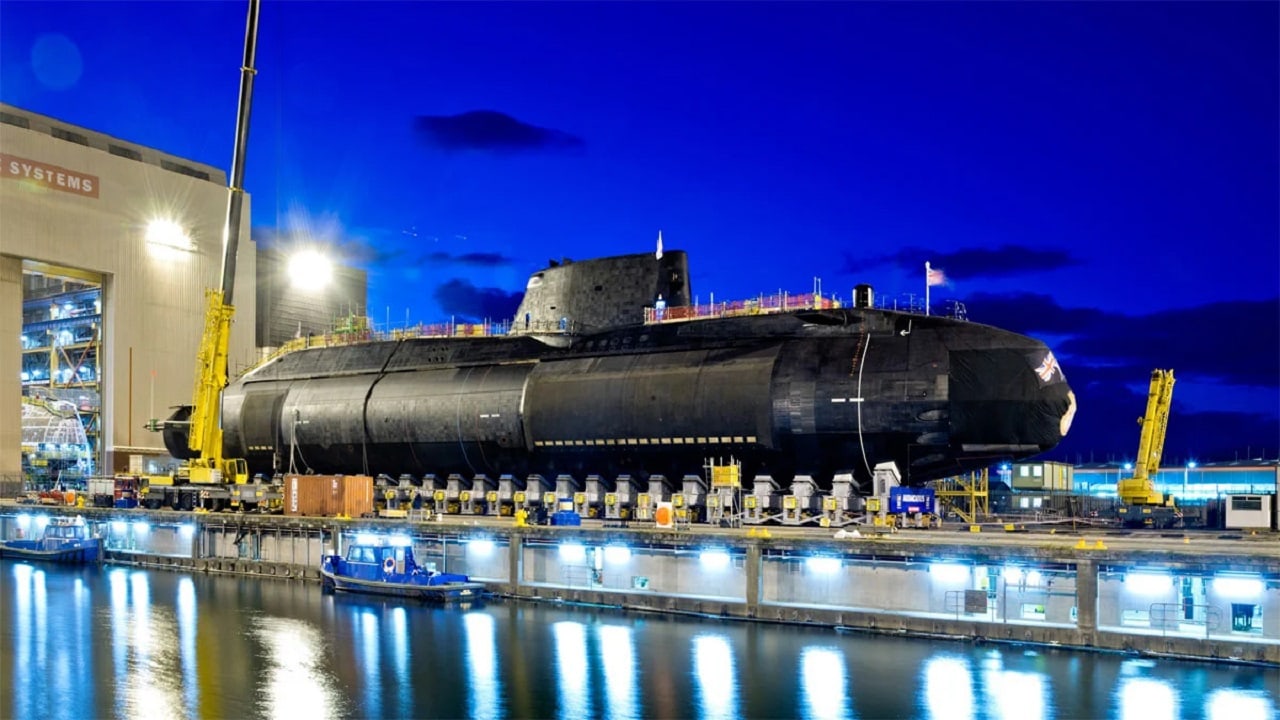The UK’s Royal Navy was once the most powerful naval force in the world. It revolutionized surface warfare with the introduction of the super battleship HMS Dreadnought and was a pioneering force in naval aviation. Now, the senior service of the British military could be taking a leading role in the development of crewless submarines.
The British Ministry of Defence announced that it has awarded a £15.4 million ($18.8 million) contract for a cutting-edge crewless submarine to Plymouth firm MSubs. The vessel will be delivered to the Royal Navy in just two years, and it will be used to further advance the UK’s ability to protect critical national infrastructure and monitor sub-sea activity.
The contract is funded by the Anti-Submarine Warfare Spearhead program, which is run by the Royal Navy’s Develop Directorate, headquartered in Portsmouth.
Project Cetus
Named after a mythological sea monster and minion of Poseidon, Project Cetus will further enhance the Royal Navy’s experimentation with autonomous underwater systems. It will be the largest and most complex crewless submarine – essentially an Extra Large Autonomous Underwater Vehicle (XLUUV) – operated by a European navy.
However, the UK isn’t alone in such a program, as China is already working to develop its own XLUUV.
According to the MoD, it is the first step in developing an operational autonomous submarine that will work side-by-side with crewed submarines – including the Astute-class hunter-killers and their successors – or independently.
“In order to meet the growing threats to our underwater infrastructure, the Royal Navy needs to be ahead of the competition with cutting-edge capabilities. Project Cetus, alongside bringing forward the MROS ships, will help ensure we have the right equipment to protect the security of the UK and our Allies,” said UK Minister of Defence Ben Wallace.
“Having the skills base and specialist knowledge to develop and build this vessel in the UK, is testament to the UK’s leading reputation in building surface and sub-surface ships,” Wallace added.
A total of 10 of the submarines will be produced, supporting 70 specialist jobs in the city.
“The faith the Royal Navy has shown in our small business is humbling and we look forward to working closely together in the future, as we have in the recent past, to develop and deploy Cetus, in the national interest,” said Brett Phaneuf, chief executive officer at MSubs.
Going Deep
At just 12 meters (approximately 40 feet) in length, 2.2 meters (7.2 feet) in diameter, and weighing 17 tonnes, it will be the largest and most complex crewless submersible operated by a European navy. The bespoke vessel is being designed and built for the Royal Navy by Plymouth-based tech firm MSubs.
It will have a maximum operational depth that will exceed that of the current submarine fleet, providing the Royal Navy with even greater reach into the oceans in support of UK defense. It will be able to cover up to 1,000 miles in a single mission. The unarmed vessel is battery-powered, meaning its effective range can be increased by installing additional batteries.
The sub’s small size will allow it to fit inside a shipping container and be easily transported around the world to wherever it is needed. In addition, it will be designed to operate with all of the ships from the Royal Navy fleet as well as those of our allies.
Cetus is just the latest effort by the Royal Navy to develop autonomous platforms. It will further allow for greater experimentation, on which to build cutting-edge technologies and capabilities around, and to encourage innovation and the development of best practices.
What Experts Had To Say
“Submarines are powerful deterrents and vital to protecting the UK’s interests as a maritime trading nation, but they are also some of the most expensive military undertakings, with difficult recruitment and retention for technical and skilled crews,” James Marques, associate aerospace, defense and security analyst at international analytics firm GlobalData said via an email to 19FortyFive.
“A Ukrainian attack on the Russian fleet at Sevastopol with a squadron of unmanned vessels has underlined the emerging role that ‘drone’ ships will have in naval warfare at a fraction of the cost of crewed ships,” Marques added. “The Cetus announcement follows a recent acquisition of three smaller UUVs from the U.S.’s Huntington Ingalls, as the tense security environment pressures the MoD to experiment faster.”
As Cetus is a modular and portable design, it will be able to work side-by-side with the Royal Navy’s crewed vessels – both surface ships and submarines.
“Although the Navy already uses crewless systems for minesweeping and reconnaissance, Cetus will likely work to protect vital undersea cables and alongside manned Astute-class attack submarines, with a range of 1,000 miles and deep-sea capability,” said Marques. “The project will be a testbed to mature ‘best practice’ operations for future unmanned vessels in more combat-orientated roles, which will be a big leap in UK naval history.”
A Senior Editor for 1945, Peter Suciu is a Michigan-based writer. He has contributed to more than four dozen magazines, newspapers, and websites with over 3,000 published pieces over a twenty-year career in journalism. He regularly writes about military hardware, firearms history, cybersecurity, and international affairs. Peter is also a Contributing Writer for Forbes and Clearance Jobs. You can follow him on Twitter: @PeterSuciu.

